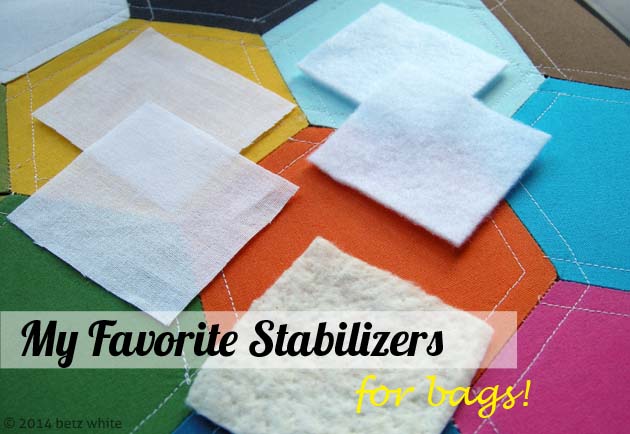
How’s that for an exciting blog post title? Talking about interfacings is as thrilling as watching paint dry, but choosing the right stuff is so important! (just like dry paint, right?) Rather than give you the full gamut of stabilizer options, I’m going to highlight my favorites and give you some examples of them in action.

My go-to stabilizer for bags is a woven cotton fusible interfacing. Because it’s woven and not that non-woven pressed stuff, I find that it behaves more like the woven fabric I’m fusing it to. And because it’s cotton, you can iron your fused fabric from both sides with an iron on the cotton setting. I like Pellon’s Shape Flex 101 (top left). It comes in a 20″ width. I’ve recently started using Heat n Bond’s Woven Fusible Soft which comes in a 45″ width. It’s very similar to the Pellon SF101 but wider.
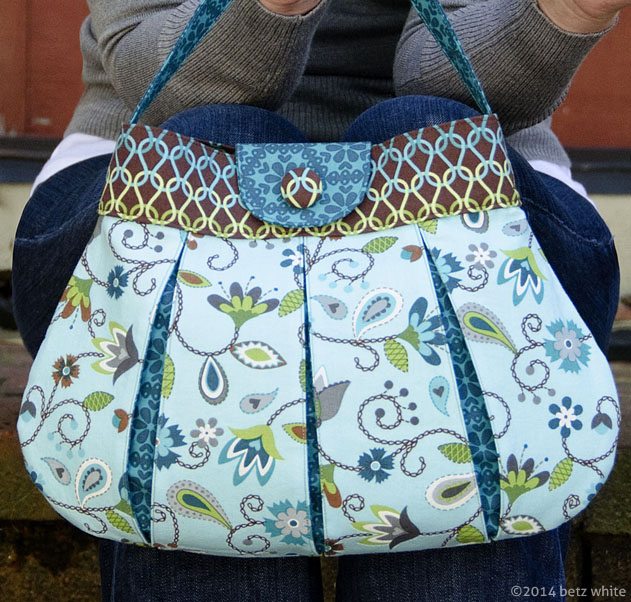
The Caitlyn Handbag, above, is made out of quilting cotton using SF101 as a stabilizer. It gives the fabric a nice crisp finish and fuses well without bubbling or buckling. It also gives quilting cotton, which is a little lightweight for bags, a little more body and strength. It’s perfect for smaller bags like this. I also like to use SF101 on my lining fabrics.
If I’m looking for more body and stability, I opt for a fusible fleece, like Pellon’s Thermolam Plus (swatches above, right). This is a synthetic fleece with a nice even loft that allows larger bags to hold their shape without being too stiff. There’s also a non-fusible Thermolam that can be machine basted into place or quilted.
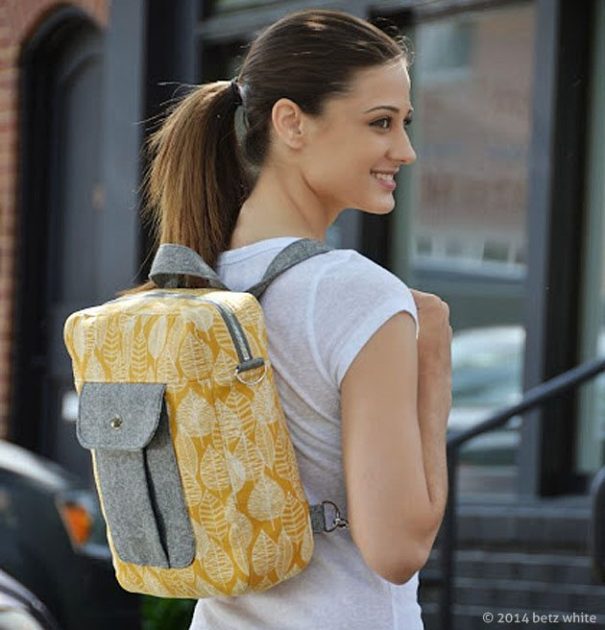
The Jet Pack Bag, above, is made with a lightweight canvas backed with fusible fleece. You can see how it give a more structured bag shape without being boardy. The pleated pocket on the front is made with a linen backed with SF101, giving the pleats a crisper edge.
For a softer overall look (but not flimsy) I’ll add a nice cotton batting as an interlining. It’s great because you can quilt it or just catch it in the seams as you go for smaller bags. And because you don’t need to fuse it, it saves a little time.
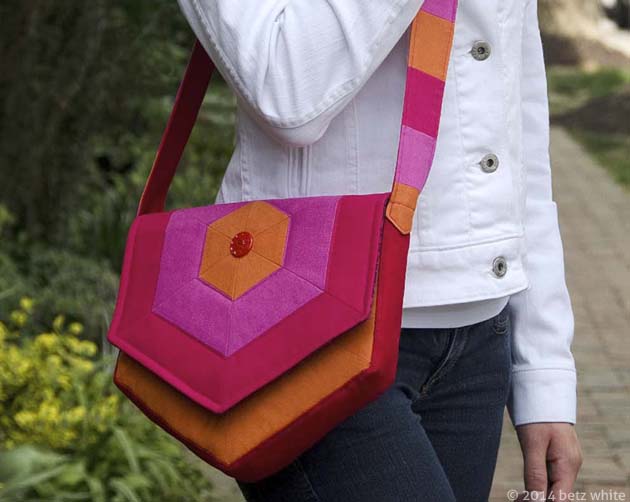
The Hex Messenger Bag, above, and the Hexie Hipster, below, are made with quilting cottons and cotton batting. They are both nice soft bags that still hold their shape as well as give you the option to add quilting.
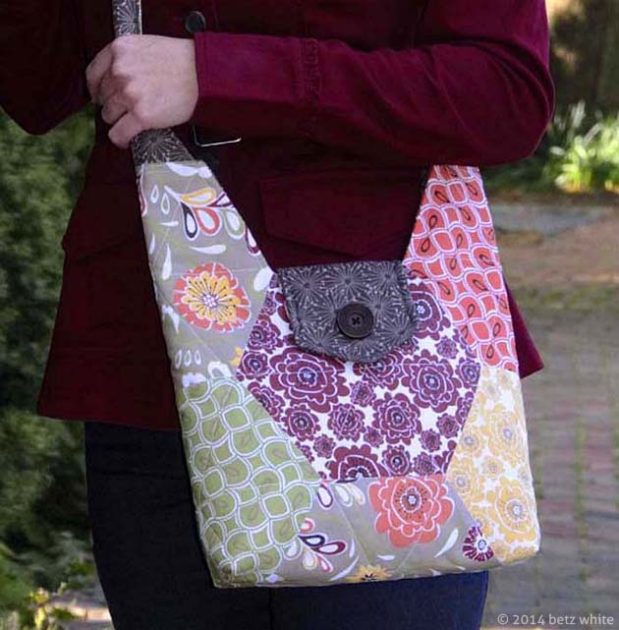
Of course, you can combine stabilizers, such as interfacing the main fabric with SF101 and adding a layer of batting or fleece underneath. There are a myriad of stabilizer options out there! Your best bet is to try different kinds, evaluate the result, and decide what your preference is.
What are your favorite stabilizers? Do you have any tips for using them?

Betz..this information is invaluable, no matter how simple the title is :))
Doing trial and error on a bag is the pits and your succinct descriptions of the stabilizers is just what is needed.
Perfect timing! I was just pondering interfacing for a bag made from recycled denim.
Have never really understood the different stabilizers or where best to use them. As Christine, above, stated, “doing trial and error on a bag is the pits.” I don’t have the time to mess around with trial and error. Thank you, thank you.
Great explanation of what to use to get what results! My biggest problem is that I find something I like but the label gets separated from the product and when I’ve used it up I don’t know what to get the next time!
Ooh, something just like SF101 but twice the width? Sign me up!!! THanks so much for this info Betz! (Of course, I JUST ordered 2 bolts of SF101…sigh…)